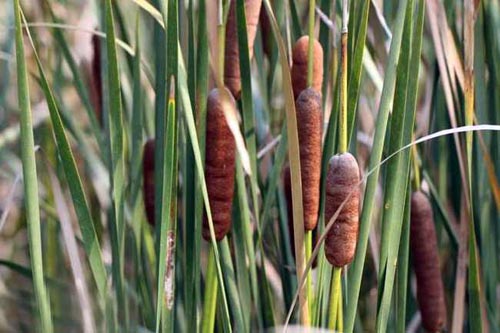The source is from the pollen of Typha angustifolia L., or other species of the same genus, family Typhaceae. The medicinal material is produced in all parts of China. The male one on the flower is collected during May and June when the flower just opens, and then dried in the sun, ground and the fine power being sieved. The crude or fried one can be used.
Medicinal Properties: Sweet in flavor, mild in nature and attributive to the liver and pericardium meridians.
Actions: Stop bleeding and remove blood stasis, and promote diuresis.

Application
1. It is used for all interior and exterior bleeding syndromes, whether the syndromes are due to cold or heat, with or without blood stasis. The crude can stop bleeding and meanwhile can promote circulation of the blood and remove blood stasis. The carbonized one can stop bleeding with the astringent action. It can be used alone or together with Xianhecao (Herba Agrimoniae), Hanliancao (Herba Ecliptae) , and Cebaiye (Cacumen Biotae), etc.. External application is used for bleeding due to trauma.
2. For angina pectoris, postpartum abdominal pain, and dysmenorrhea, etc., it is usually combined with Wulingzhi (Faeces Trogopterori ), that is, Shixiao San (Powder).
3. For stranguria complicated by hematuria, it can be combined with Dongkuizi ( Semen Malvae Verticillatae) and Shengdihuang ( Radix Rehmanniae ), such as Puhuang San (Powder). Besides, it can be used for hyperlipemia in clinic.
Usage and Dosage: 3 - 10 g is wrapped and used in decoction for oral use and just right amount for external use.
Notes: Contraindicated in pregnant women but can be used for postpartum bleeding caused by abnormal uterine contraction.








